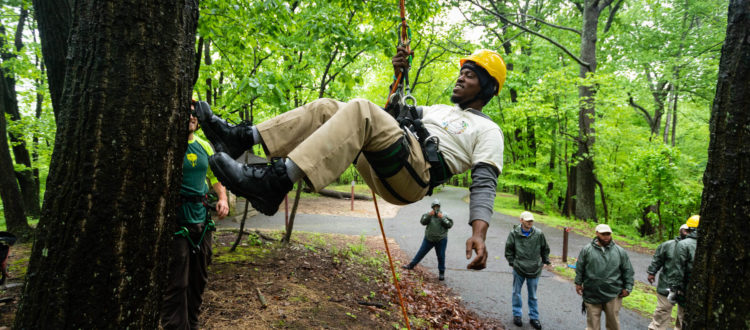When green jobs training leads to more than a paycheck
WILL PARSON, CHESAPEAKE BAY PROGRAM — On a drizzly May day at Patapsco Valley State Park in Carroll County, Maryland, about a dozen adults in matching blue sweatshirts and thick work boots gathered around a sturdy chestnut oak to watch a pair of arborists loop a rope around a branch about 20 feet off the ground. After a short lesson, one by one, the group started to climb.
The park served as a classroom for the final field trip of the Maryland Department of Natural Resource’s (DNR) Work2Live WELL program. The inaugural program, in partnership with Baltimore Civic Works and other public and private partners, provided eight weeks of labor intensive, hands-on training to 16 participants in Baltimore and two in Cambridge, in order to prepare them for careers related to sustainability and the environment.
Work2Live WELL is one of many green jobs training programs serving a demand for workers that is only expected to increase as regions of the Chesapeake watershed focus on meeting their restoration goals, and as industries respond to growth in fields like solar energy and recycling.
“The number of jobs are growing, so the number of companies are growing because of Maryland’s growing investment in environmental restoration,” said Eli Allen, director of Baltimore Civic Works’ Baltimore Center for Green Careers.
In Maryland, investment in green sectors is on the rise. The state’s total investment in stormwater projects will top $1 billion within a few years. In Baltimore alone, according to an analysis compiled by Civic Works, investments in environmental remediation of brownfield sites total $2 billion. As of 2017, investments in energy efficiency and energy conservation following the EmPOWER Maryland Act were $2.4 billion.
–
Check out the rest of the article online at the Chesapeake Bay Program. Photo credit Will Parson, Chesapeake Bay Program.

